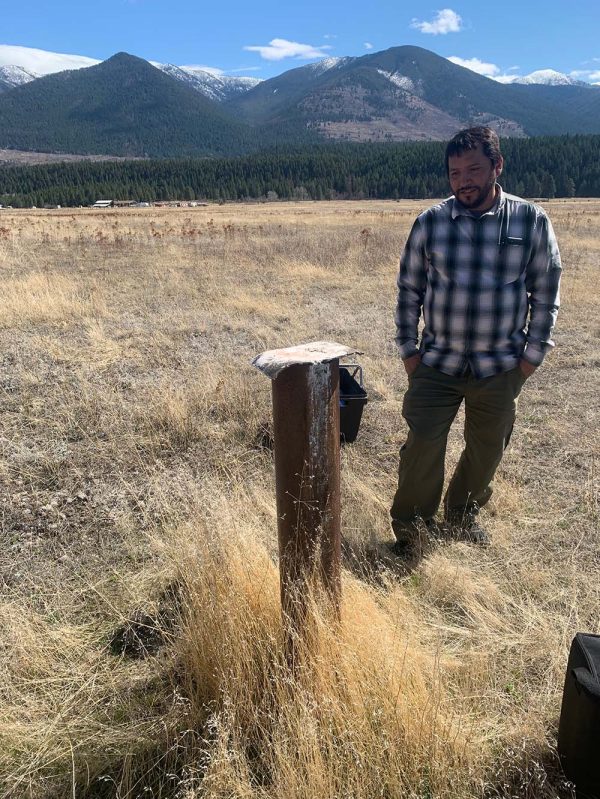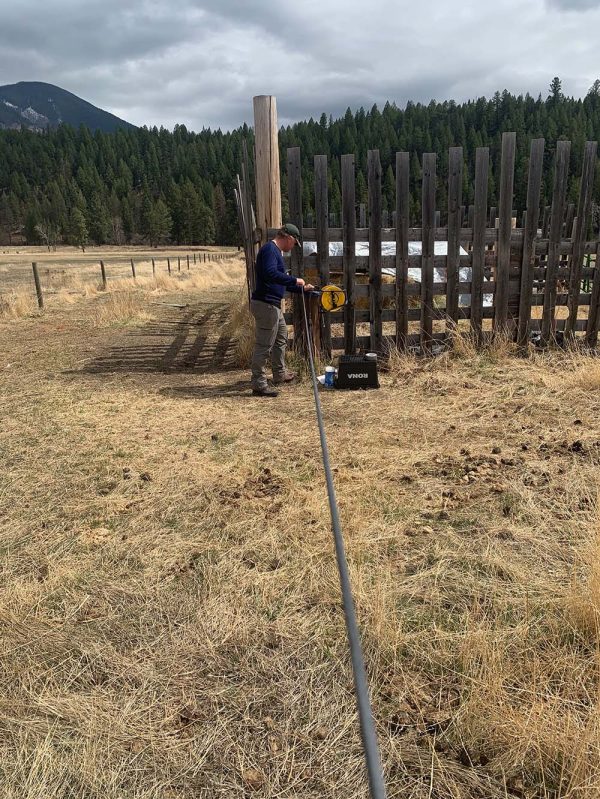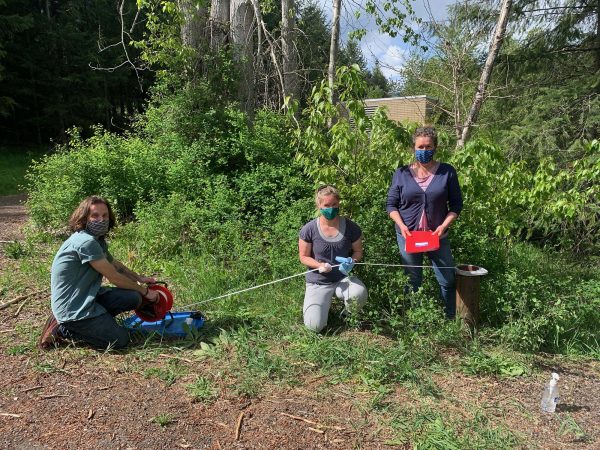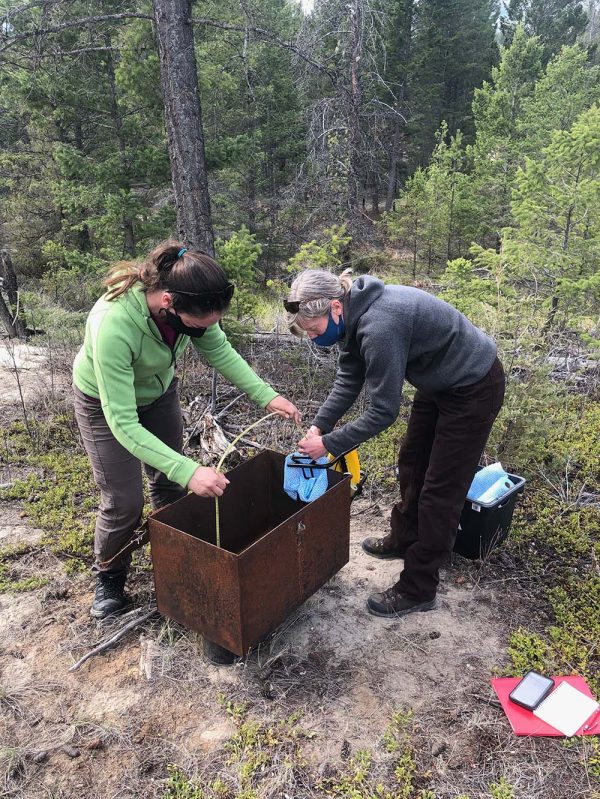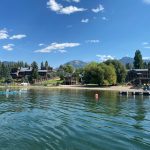Spring groundwater monitoring complete, two new Volunteer Observation Wells established

Nature Trust of BC staff assisting LLC staff with monitoring Volunteer Observation Well 14 on the Nature Trust of BC Hoodoos Property, south of Invermere. April 30th 2021.
Despite COVID, it has been a busy spring for the Columbia Basin Groundwater Monitoring Program. Site visits and spring monitoring has been conducted at all of our Volunteer Observation Wells, following COVID and physical distancing protocols, and in mid-June we presented an overview of the program as part of the Columbia Basin Water Hub Webinar Series “Why Care About Water Data?”. A recording of the groundwater program’s segment can be viewed here.
The program has been working with Selkirk College in Castlegar and the Yaq̓it ʔa·knuqⱡi ‘it First Nation in Grasmere, B.C. to add two new Volunteer Observation wells, bringing the total number of wells in the program to 22.
Throughout April and May, site visits to the 20 active Volunteer Observation Wells in the program were conducted. During these visits, we collected manual water level measurements, downloaded data, and conducted maintenance on the loggers and wells. A big shout out to JR Drilling who took time out of their busy schedule to provide welding services and materials in-kind to increase the stick-up for one of our Volunteer Observation Wells. As always, we’re grateful to our volunteer well owners who help us out when we’re on site.
The most recent data available to the public can be found on the Columbia Basin Water Hub and the BC Real-time Water Data portal. We are looking forward to analyzing the data, particularly for wells where we now have multiple years of data. The British Columbia Drought Information Portal reported on May 26th and June 9th that the Lower Columbia, West Kootenay, and East Kootenay Basins were at Drought Level 1 (“Adverse Impacts Rare”, based on a scale of 0 to 6). As we move through the summer, we are interested in seeing how groundwater levels respond to changing drought conditions in different aquifers.
New wells established…
This spring we partnered with Selkirk College in Castlegar to establish a new Volunteer Observation Well on the campus where students will have an opportunity to get hands-on experience monitoring Aquifer 506 near the confluence of the Columbia and Kootenay Rivers.
We also spent time and partnered with the Yaq̓it ʔa·knuqⱡi ‘it First Nation in Grasmere to identify a suitable well and install monitoring equipment to monitor groundwater levels in Aquifer 1061. We’re looking forward to seeing the data from both these wells. Our next round of site visits for all the wells in the program will take place mid-summer.
We gratefully acknowledge support from the Columbia Basin Trust for helping establish the Volunteer Observation Well at Selkirk College and from TD Friends of Environment, Real Estate Foundation of British Columbia, Vancouver Foundation, Royal Bank of Canada, and the Province of BC’s Healthy Watersheds Initiative for supporting ongoing monitoring and expansion of the program.
If you’d like to learn more about the Columbia Basin Groundwater Monitoring Program, visit the project page or contact program manager Carol Luttmer at carol@livinglakescanada.ca.
